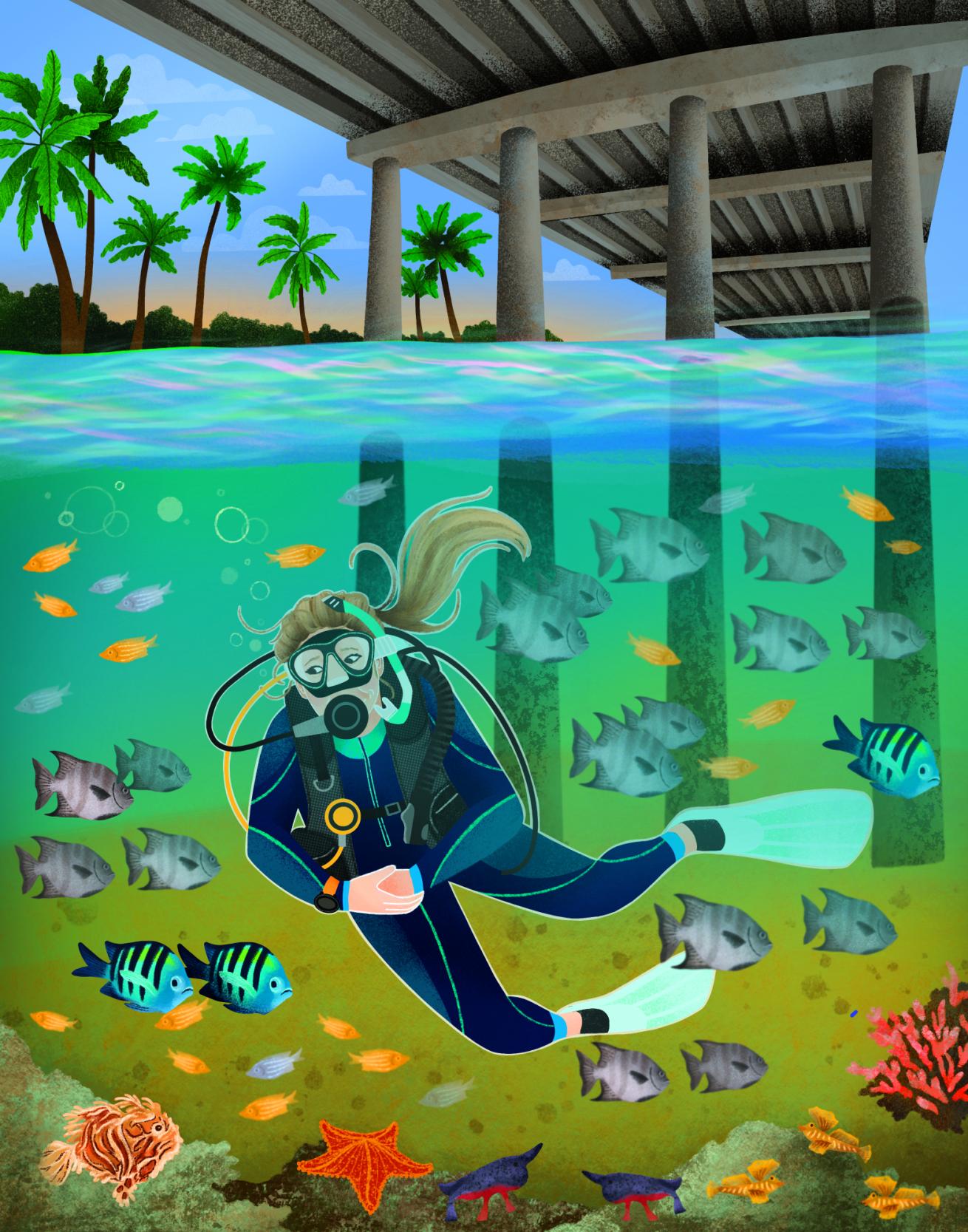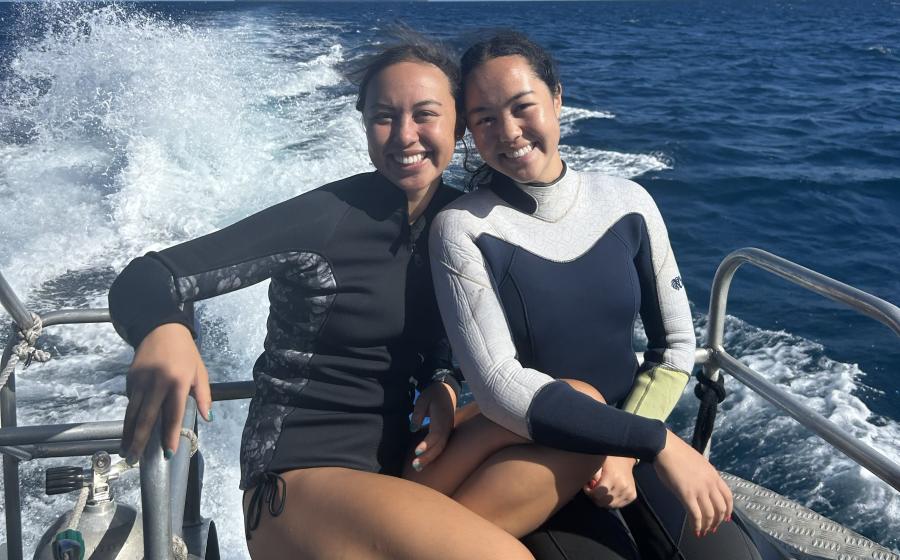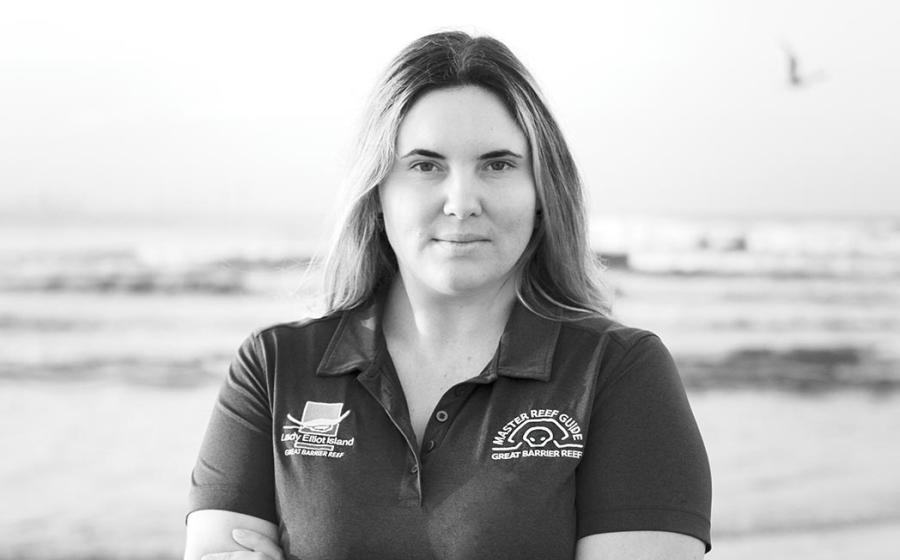An Ode to Shallow Diving

Lauren Rebbeck
I prefer my friendships deep. But when it comes to diving, keeping things shallow and close to the surface can be just as satisfying. Whenever I tell my non-diving friends that I’ve just returned from a dive, the first thing they usually ask is, “How deep?”
If you’re not a diver, it’s normal to assume that the sport is all about getting to the bottom of things. But there’s plenty of interesting stuff to see in the shallows where the sun shines brightest too. And that spot might just be in your own backyard. Years ago I was on a trip to Papua New Guinea, a total dream destination I was thrilled to be visiting—both to scuba dive, and for the topside cultural and natural wonders. I spent my first few nights in Kimbe Bay at Walindi Plantation Resort where I’d come hoping to spot my first frogfish. Joining me was a well-known underwater photographer. When I told him I was from Florida, he said, “You know one of the best places in the world to see frogfish is under a bridge in West Palm Beach, right?”
Related Reading: Diving Advice for Recent College Grads
I’d traveled to the other side of the world hoping to spot something that could be seen in my own backyard on a shore dive. When I got home, I immediately planned a dive trip down the coast to the Blue Heron Bridge for what’s become my favorite shallow frolic.
Half an hour to an hour before slack tide is the best window for entering the water from the parking lot at Phil Foster Park, just north of West Palm Beach. That’s when water flooding into the inlet from the Atlantic Ocean turns the otherwise murky waters crystal clear, lifting a curtain on all kinds of weird and wonderful creatures that call the bridge columns and surrounding sandy seabed home—all in no more than 20 feet of water.
Related Reading: The Allure of Night Diving
In the shallows of Blue Heron Bridge, known as Florida’s exotic critter capital, I spot tiny lancer dragonets in the sand with their delicate flag-like fins at full mast. Bottles, carelessly tossed into the water, are taken over by barnacles and now serve as octopus dens.
Longnose batfish pretend I’m not there, their red lips pouting like supermodels. And seaweed blennies return my curious looks from inside their barrel sponge abodes as if to say, “You mask-and-finned things, again?” With the help of a guide from Pura Vida Divers, I even spotted my first striated frogfish atop a patch of sand I would otherwise have swam right past—so like a clump of seaweed was its unassuming presence. And in such shallow water, we had what felt like all the time in the world to admire them.
Going as deep as their limits allow isn’t every diver’s endgame—and at many dive sites, it’s hardly the point at all. When you know where to dive and look, staying shallow can feel like going quite deep.










